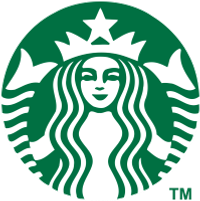
Starbucks Corp
NASDAQ:SBUX
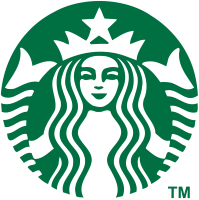

| US |

|
Johnson & Johnson
NYSE:JNJ
|
Pharmaceuticals
|
| US |

|
Berkshire Hathaway Inc
NYSE:BRK.A
|
Financial Services
|
| US |

|
Bank of America Corp
NYSE:BAC
|
Banking
|
| US |

|
Mastercard Inc
NYSE:MA
|
Technology
|
| US |
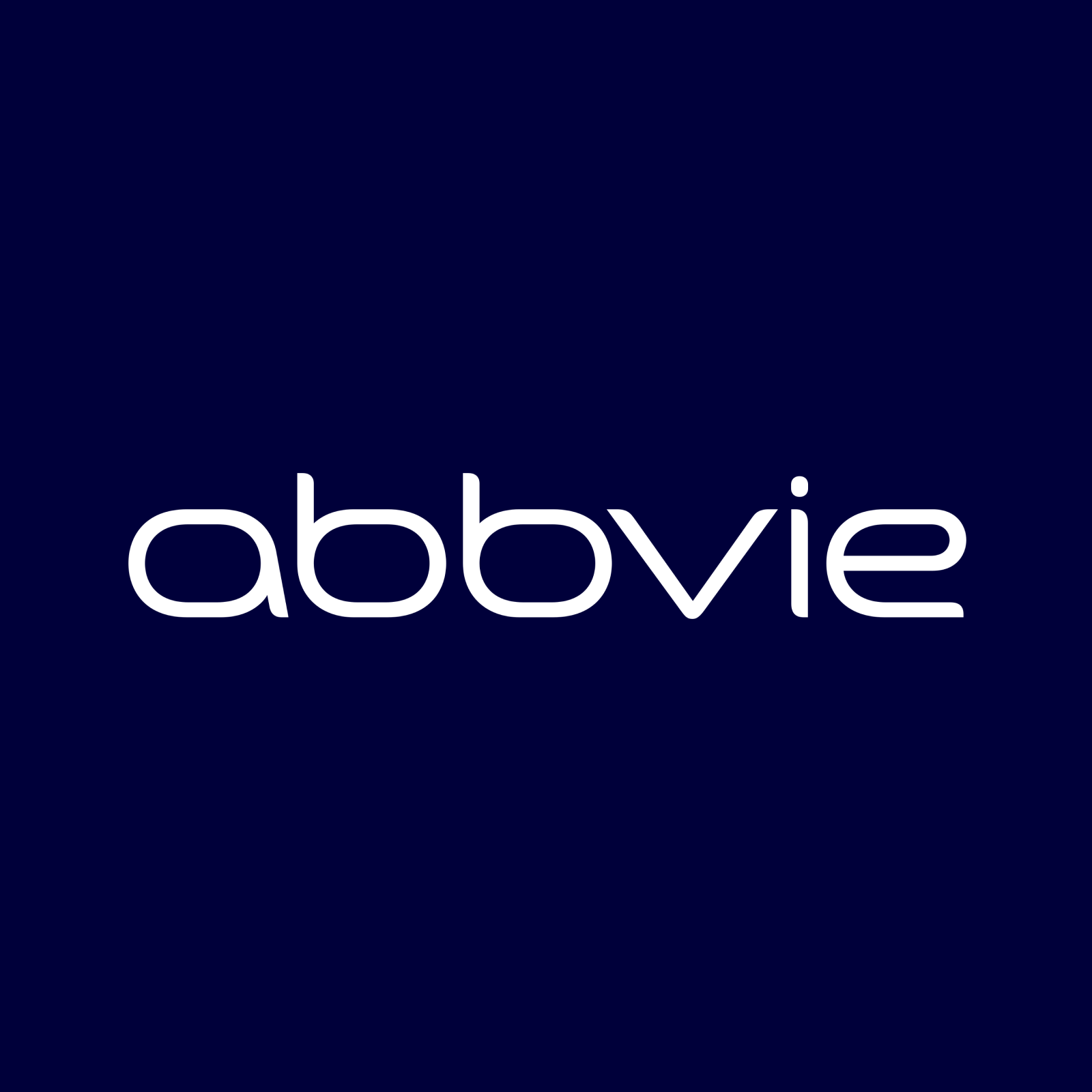
|
Abbvie Inc
NYSE:ABBV
|
Biotechnology
|
| US |

|
Pfizer Inc
NYSE:PFE
|
Pharmaceuticals
|
| US |

|
Palantir Technologies Inc
NYSE:PLTR
|
Technology
|
| US |

|
Nike Inc
NYSE:NKE
|
Textiles, Apparel & Luxury Goods
|
| US |

|
Visa Inc
NYSE:V
|
Technology
|
| CN |

|
Alibaba Group Holding Ltd
NYSE:BABA
|
Retail
|
| US |

|
3M Co
NYSE:MMM
|
Industrial Conglomerates
|
| US |

|
JPMorgan Chase & Co
NYSE:JPM
|
Banking
|
| US |

|
Coca-Cola Co
NYSE:KO
|
Beverages
|
| US |

|
Realty Income Corp
NYSE:O
|
Real Estate
|
| US |

|
Walt Disney Co
NYSE:DIS
|
Media
|
| US |

|
PayPal Holdings Inc
NASDAQ:PYPL
|
Technology
|
Utilize notes to systematically review your investment decisions. By reflecting on past outcomes, you can discern effective strategies and identify those that underperformed. This continuous feedback loop enables you to adapt and refine your approach, optimizing for future success.
Each note serves as a learning point, offering insights into your decision-making processes. Over time, you'll accumulate a personalized database of knowledge, enhancing your ability to make informed decisions quickly and effectively.
With a comprehensive record of your investment history at your fingertips, you can compare current opportunities against past experiences. This not only bolsters your confidence but also ensures that each decision is grounded in a well-documented rationale.
Do you really want to delete this note?
This action cannot be undone.

| 52 Week Range |
72.5
107.21
|
| Price Target |
|
We'll email you a reminder when the closing price reaches USD.
Choose the stock you wish to monitor with a price alert.

|
Johnson & Johnson
NYSE:JNJ
|
US |

|
Berkshire Hathaway Inc
NYSE:BRK.A
|
US |

|
Bank of America Corp
NYSE:BAC
|
US |

|
Mastercard Inc
NYSE:MA
|
US |

|
Abbvie Inc
NYSE:ABBV
|
US |

|
Pfizer Inc
NYSE:PFE
|
US |

|
Palantir Technologies Inc
NYSE:PLTR
|
US |

|
Nike Inc
NYSE:NKE
|
US |

|
Visa Inc
NYSE:V
|
US |

|
Alibaba Group Holding Ltd
NYSE:BABA
|
CN |

|
3M Co
NYSE:MMM
|
US |

|
JPMorgan Chase & Co
NYSE:JPM
|
US |

|
Coca-Cola Co
NYSE:KO
|
US |

|
Realty Income Corp
NYSE:O
|
US |

|
Walt Disney Co
NYSE:DIS
|
US |

|
PayPal Holdings Inc
NASDAQ:PYPL
|
US |
This alert will be permanently deleted.
 Starbucks Corp
Starbucks Corp


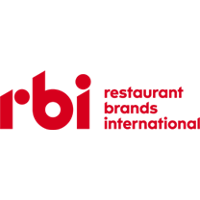
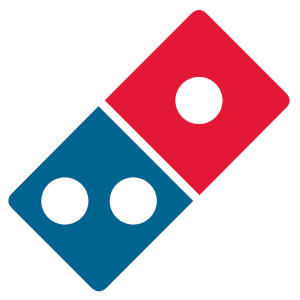
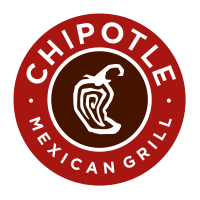
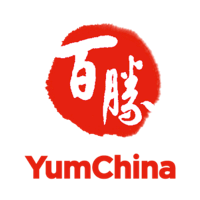

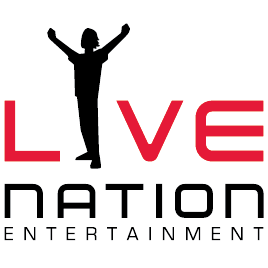

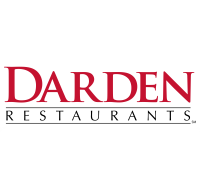


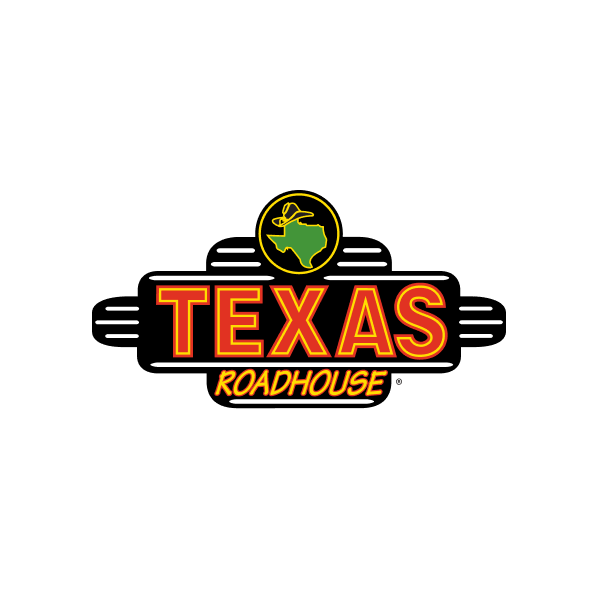


 You don't have any saved screeners yet
You don't have any saved screeners yet

Good afternoon. My name is Alex, and I will be your conference operator today. I would like to welcome everyone to Starbucks Third Quarter Fiscal Year 2022 Conference Call All lines have been placed on mute to prevent any background noise. After the speakers’ remarks, there will be a question-and-answer session. [Operator Instructions]
I will now turn the call over to Tiffany Willis, Vice President of Investor Relations. Ms. Willis, you may now begin your conference.
Thank you, Alex, and good afternoon, everyone, and thank you for joining us today to discuss Starbucks' third quarter fiscal year 2022 results. Today's discussion will be led by Howard Schultz, Interim Chief Executive Officer; Frank Britt, Chief Strategy Officer; Belinda Wong, Chairwoman of Starbucks China; and Rachel Ruggeri, Executive Vice President and CFO. And for Q&A, we will be joined by John Culver, Group President of North America and Chief Operating Officer; Michael Conway, Group President of International and Channel Development; Deb Hallisey, Executive Vice President and Chief Technology Officer.
This conference call will include forward-looking statements, which are subject to various risks and uncertainties that can cause our actual results to differ materially from these statements. Any such statements should be considered in conjunction with cautionary statements in our earnings release and risk factors discussed in our filings with the SEC including our latest annual report on Form 10-K and quarterly report on Form 10-Q. Starbucks assumes no obligation to update any of these forward-looking statements or information.
GAAP results in third quarter fiscal year 2022 include several items related to strategic actions, including restructuring and impairment charges, transaction and integration costs and other items. These items are excluded from our non-GAAP results. All numbers referenced on today's call are on a non-GAAP basis, unless otherwise noted or if there's a non-GAAP adjustment related to the metric. For non-GAAP financial measures mentioned in today's call, please refer to our earnings release on our website at investor.com -- investor.starbucks.com to find a reconciliation of those non-GAAP measures to their corresponding GAAP measures.
This conference call is being webcast, and an archive of the webcast will be available on our website through Friday, September 2, 2022. As a reminder, Starbucks 2022 Investor Day will be held on Tuesday, September 30, 2022. The event will be available to view from our website beginning at 7:30 Pacific Time. Also for your calendar planning purposes, please note that our fourth quarter and fiscal year 2022 earnings conference call has been tentatively scheduled for Thursday, November 3, 2022.
And with that, allow me to turn the call over to Howard.
Thank you, Tiffany. Good afternoon, and welcome to everyone on today's call. Starbucks' strong Q3 results highlighted by 9% global revenue growth to a record $8.2 billion, 3% global comp growth and 9% comp growth in North America once again demonstrates the power and resilience of the Starbucks business and brand all over the world.
I've now been back as CEO for four months. During that time, I've immersed myself in every segment, region, operation and aspect of our business. And given my long history with the Company and our culture and my unique understanding and appreciation of the Starbucks brand, the drivers of our global business and the special relationship that exists among our people, our brand and our customers, we've been able to pinpoint the source of each of the issues and challenges confronting the Company upon my return.
Some are definitely COVID related, some were a function of not focusing on the long term, and unfortunately, many were self-induced. More important, we now have clear line of sight on what we need to do to totally reinvent the Company and drive accelerated profitable growth around the world. The Q3 results we announced today demonstrate the early progress we have made in just four short months and served as a proof point of the significant long-term global growth opportunity ahead for Starbucks.
Each business segment contributed to our Q3 performance. I'm particularly pleased that we delivered our results in the face of stiff ongoing consumer economic and inflationary headwinds. COVID lockdowns across China that kept Shanghai, our largest China market, largely closed for two months, and that continues episodically today, and continuing shifts in customer traffic and behaviors including materially reduced office occupancy in our largest urban markets.
Our Q3 performance underscores the success of the investments we are making in our people, extending our global leadership around everything coffee and in groundbreaking beverage, food, digital and technology innovation that is deepening our connection to customers in every market and every channel. And our performance demonstrates that the Starbucks Experience is more relevant and important than ever in today's unsettled world.
On today's call, I will highlight the drivers of our Q3 revenue comp and EPS performance. I will then turn the call over to Frank Britt, our Chief Strategy Officer, to provide an overview of our reinvention plan, the strategy underpinning the investments we are making to materially elevate our partner, customer and store experiences.
Next month, at Investor Day in Seattle, you will see for yourselves how accretive to our business our reinvention plan will be, increasing efficiency, enabling us to seamlessly handle the increasing demand in our U.S. stores and most of all, elevating our partner, customer and in-store experiences. Our reinvention plan touches every aspect of the Starbucks Experience and sets us up for accelerated long-term profitable growth and value creation benefiting all stakeholders beginning in 2023. We are executing against the reinvention plan with focus, with discipline and a deep sense of urgency.
Next, Belinda will update you on China, where our position in the market and our aspirations for the future have never been greater. Rachel will provide a deep dive into our Q3 financial and operating results, and then we'll move on to Q&A. For to Starbucks' success and long-term growth strategy is our global leadership around everything coffee. No company in the world even remotely approaching Starbucks' ability to source, blend, roast and craft the world's best coffees.
And in Q3, we continued to extend our coffee leadership, innovate and bring further elements of customization and premiumization to the entire coffee category, including around cold, handcrafted and plant-based coffee beverages. Customer demand for specifically customized cold coffee beverages, a category Starbucks single-handedly created and is now expanding around the world, is so strong that cold beverages now account for roughly 75% of our total beverage sales in U.S. company-operated stores.
Customers are increasingly customizing their cold beverages by adding modifiers that enable the creation of a virtually unlimited range of taste, flavor and color profiles, and then sharing their unique coal beverage creations with the world through social media. Starbucks' unique ability to deliver handcrafted, customized cold beverages that satisfy customer desires and different need states while creating opportunities for customers' self-expression deepens our connection to customers, sets us apart from any other industry participant and provides us with a significant ongoing competitive advantage in the marketplace.
Iced Shaken Espresso introduced onto our Iced Espresso platform only last year, is resonating so wildly with our Gen Z customers that it has already become the fastest-growing product category in our U.S. company-operated stores, growing 50% year-over-year, more than doubling year-to-date and importantly creating new customer occasions in the midday and afternoon day parts. Iced Shaken Espresso was also resonating around the world. In China, for example where Iced Shaken Espresso was only introduced in June of this year, it is already among our best-selling iced coffee beverages despite mobility restrictions in China.
Just to summarize what's going on with cold and specifically customized beverages. The premium customized cold coffee opportunity ahead for Starbucks all around the world is simply enormous.
Let me turn to North America. The very strong demand for Starbucks Coffee in the U.S. that we reported on our Q2 call has accelerated in Q3. U.S. company-operated stores delivered record average weekly sales, 5 of the top 10 grossing sales day in our history and a $410 million sales week. In North America, overall, the combination of customer shift towards premium cold beverages, increased customization, strategic decisions on our part with regard to beverage and food and modifier pricing and a 19% increase in food sales, driving net revenues up 13%.
In addition, our North American licensed stores business, now 7,000 stores strong and growing, also posted strong results with 24% revenue growth in the quarter. While we are sensitive to the impact inflation and economic uncertainty are having on consumers, it's critically important that you all understand we are not currently seeing any measurable reduction in customer spending or any evidence of customers trading down, reflecting the strength of the Starbucks brand, deep customer engagement and loyalty, pricing power and the premium nature of our beverage and food offerings.
What's driving some of the increase in traffic and the strength in our business is our Rewards program. Active Starbucks Rewards membership in Q3 totaled 27.4 million members, up 3.2 million or 13% year-over-year and 3% sequentially. Our loyal Starbucks Rewards members drove a record 53% of U.S. company-operated revenue, Mobile Order & Pay, drive-through delivery also remained quite strong, driving 72% of our U.S. revenue. Increased Starbucks Rewards membership, customer excitement over our beverage and food offerings, plus a fantastic holiday lineup that I'm certain will delight our customers gives us tremendous confidence heading into holiday and 2023.
My first order of business upon returning to Starbucks in April was to meet with Starbucks retail store and roasting plant partners across the United States in order to better understand the state of our business and the challenges confronting our partners and the Company. It soon became clear that record demand in our stores was masking significant underlying issues, including, as we shared in our last call, store designs that were ill suited to the evolving customer behavior and traffic patterns we are seeing post COVID.
Our stores, in many ways, are windows on America, and our partners everywhere shared similar anxieties over a wide range of issues, affecting their families and their lives around safety, around mental, physical and financial health issues over the widening cultural and racial divide in the state of our country and the world. Many questions whether the American Dream and economic mobility was still realistic aspirations. Our partners also shared how hard it had become to keep up with customer demand and how insufficient training had left new partners unprepared for their roles, challenging partner and customer experiences alike.
The conversations were raw and in many ways, painful for our leaders to hear. But core to Starbucks culture is the requirement that we always speak with each other with honesty, transparency and without judgment or fear of appraisal. The truth is, at times, I was overwhelmed by what I heard. The challenges, the fears, the desire for emotional and financial security and the sense of belonging in our partner's lives amid an all uncertainty world.
At the same time, I found myself feeling so proud, so appreciative and oftentimes in awe of our partners across the country who showed up every day committed to delivering an elevated Starbucks Experience to our customers and communities despite the personal challenges and obstacles they were experiencing. We were in a moment where Starbucks leaders needed to put themselves in the shoes of our partners and demonstrate great empathy and compassion towards them. And we needed to address our partners concerns with urgency.
What began as informal partner meeting soon evolved into focused co-creation sessions where Starbucks partners and leaders collaborated on how best to re-imagine the next Starbucks. We've since held over 100 co-creation sessions. And from these sessions, our reinvention plan has taken shape. Today, over 30 cross-functional teams are focused exclusively on executing the U.S. reinvention plan you will see take shape over the quarters ahead. And in time, you will see best practices shared around the world.
We assembled our 200 top U.S. executives in Seattle last month to kick off Starbucks reinvention and change agenda. In a few minutes, Frank Britt, a key architect of the plan, will provide you with an overview so you can begin to understand how accretive each pillar of the plan will be to our business and brand long into the future.
The strong revenue growth we delivered in North America in Q3 is being replicated globally. With the exception of China where the Zero COVID policy continues to result in mobility restrictions and limited store operations, each one of our international regions grew revenues by double digits in Q3. It's an extraordinary accomplishment, reflecting both the strength of the Starbucks brand and strong and accelerating demand for Starbucks coffee all over the world.
Our international performance also underscores the correctness of our strategies of investing ahead of the curve in beverage, digital and technology innovation that is relevant to our customers in driving new store growth in every market in which we operate. Overall, our international segment, excluding China, grew revenue 33% year-over-year or 50% excluding FX, while meaningfully expanding operating margin, reflecting the strong operating leverage inherent in our complementary portfolio of company-operated and licensed stores.
Last month, several Starbucks leaders joined me on a multi-country tour across several strategic theaters of our EMEA business. In every country we visited, we were inspired by what we heard, felt and observed, product quality, service execution and knowledge of coffee across EMEA are all delivered at the highest levels. Our EMEA teams are executing well, we think together a powerful emotional connection and sense of belonging among our partners and customers with the Starbucks Experience being the shared medium of exchange.
And our EMEA partners are literally thriving, inspired and earnestly engaged in bringing our unique culture of respect, purpose, service and an authentic and aspirational love of coffee to life. Interestingly, while thousands of stores in many countries drove strong financial performance during the quarter, I want to showcase one market in particular that serves as a proxy for the strength of the Starbucks brand and demonstrates the enormity of the international opportunity ahead.
Italy. Italy, a market we only recently entered and a market that is close to my heart and that no one ever expected us to succeed in. Starbucks is flourishing in Italy. The quality of the coffee, the food and the partner and customer experiences are second to none. Traffic in our Milano Roastery, Starbucks' shrine to coffee, is strong throughout the day, driven largely by tourist activity. But most importantly, traffic in our Italy retail stores is largely local customer driven. And when I was there, what I observed is Italians drinking straight espresso at Starbucks. We are being warmly welcomed in Italy, the country in which our Starbucks journey literally began. Given the success we are enjoying in Milan, we are now planning to open in Rome and in Florence.
As home to our EMEA roasting operations, Amsterdam is a strategic foothold for our international efforts. In July, we committed to a planned expansion that will materially increase our roasting capacity in order to meet the rapidly growing demand for Starbucks Coffee across the region. Similar efforts are underway to support a supply chain team that currently handles logistics to over 4,000 stores across 42 countries in EMEA. In Switzerland, we held highly productive sessions with our partners at Nestle. Global Coffee is among Nestle's largest strategic growth categories and our partnership with Nestle now extends across 81 markets focusing on at-home coffee and food service channels.
Building on our number one share position in the United States at home, retail and CPG coffee channels, we are in the very early stages of leveraging the Starbucks brand and Nestle's global coffee platforms and significant distribution capabilities to create new super premium coffee occasions on the espresso platform all around the world. Our partnership with Nestle is driving meaningful competitive advantages for both companies in the marketplace and is highly accretive to our business.
Looking ahead, we expect to see a closer Starbucks Nestle partnership. This includes introduction of Starbucks varietals onto Nespresso's digital sales platform, a channel that does not presently exist for us and represents a massive global opportunity. Expansion of Starbucks-Nestle partnership to include inclusion of many traditional Starbucks varietals on the Nespresso digital platform, co-creation of Starbucks Reserve arrivals for the virtual platform and the development of an espresso experience in our U.S. Roasteries. We're also looking forward to the launch of our ready-to-drink Starbucks coffees in Southeast Asia, Oceania and Latin America, which will begin rolling out in next quarter.
In China, mobility restrictions and limits on in-store dining continue to significantly impact the business. However, as Belinda will soon share, we are beginning to see green shoots of recovery with sales and comps coming out of the quarter, reflecting sequential improvement. Lastly, we have been working on a very exciting new digital initiative that builds on our existing industry-leading digital platform in innovative new ways, all centered around coffee and most importantly, loyalty that we will reveal at Investor Day.
We believe this new digital Web three-enabled initiative will allow us to build on the current Starbucks Rewards engagement model with its powerful spend-to-earn Stars approach while also introducing new methods of emotionally engaging customers, expanding our digital third place community and offering a broader set of rewards, including one-of-a-kind experiences that you can't get anywhere else. Integrating our digital Starbucks Rewards ecosystem with Starbucks branded digital collectibles as both a reward and a community building element, this will create an entirely new set of digital network effects that will attract new customers and be accretive to existing customers in our core retail stores.
As I mentioned at the outset, we are looking forward to fully showcasing the power and the opportunity of our reinvention plan that we will unleash at next month's Investor Day.
With that, I'll turn the call over to Frank Britt.
Thank you, Howard, and good afternoon, everyone. I've had the good fortune of joining our company during one of its most exciting times, a time of reinvention. We have come together as a Starbucks community and architected a comprehensive plan to future-proof and profitably grow the Company. Our path forward is being informed by tens of thousands of daily customer experiences, and our partner stories, ideas and dreams that have all helped shape over the past several months through on-hand collaboration sessions, digital surveys, live open forums and in direct dialogue with our key leaders. This process is indicative of a new and wide-ranging approach to democratizing innovation at Starbucks.
Our reinvention efforts will begin with our core U.S. company-owned retail business, and over time, we'll expand across our global footprint. Specifically, we have prioritized five major strategic shifts to pivot the U.S. business in a new direction. Today, we will provide the guideposts and address what of the overall program, while the how of this agenda will be reviewed on Investor Day in September.
To that end, first, powered by ongoing partner co-creation, we work to further connect the Company to truly operate as one global enterprise enabled by new ways of working and a range of contemporary practices and tools. To start, for the U.S. company-owned retail business, we will focus on better integrating our culture and values across the three cohorts of our retail partners, operations partners and support center partners. Our end game is a greater focus as a single company with agility and empowered organization, and we see this work as the fabric that will help bind our change management agenda and will be meaningfully catalytic to our long-term operating and financial performance.
Secondly, we are fully embracing the need to radically improve our in-store partner experience. We know that our partners are vital to bringing an elevated Starbucks brand to our customers every day, and we seek to honor, empower and affirm their strategic importance. The first principles of our new partner engagement approach include both greater safety and kindness in our stores, personalized career pathway that drives advancement and opportunity, and an explicit and personal emphasis on improving overall partner well-being.
To that end, as we shared in our last earnings call, we have several high-impact improvement efforts in flight, including this week's wage acceleration for all U.S. in-store partners, doubling in-store partner training investments, reintroduction of our iconic Black Apron and Coffee Masters credential and the implementation of a new digital partner engagement platform. We also expect to roll out both the universal tipping and a new recognition and badging platform by calendar year-end 2022. Each of these substantial actions are part of a multiphase path to reinventing the retail partner experience that we expect will have a direct positive effect on partner retention, customer connection and essential brand affinity metrics.
Third, we must reimagine our stores. This starts with the core engine of production that must be better calibrated for the customer habits of today and deliver superior experiences through personalization across every format and in every channel. Innovations such as new bar configurations, patented coffee technology, novel store prototypes are high priorities in the plan designed to improve throughput and heavily customized beverages, along with both customer and partner experience. Our high-priority improvement efforts include key equipment acceleration to drive more efficient and effective operations such as Clover Vertica, an expansive renovation and new store agenda.
Four, we will further evolve how we reconnect with customers, mindful that each individual consumer must be provided a uniquely personal experience that is unified across channels. Building on our strong track record of superior customer engagement, representative initiatives in this sphere included a reimagined approach for customer-facing products and platforms, new models of effortless digital ordering and further growing the value proposition of our loyalty programs through novel and new strategic partnerships.
Fifth, we will redesign what partnership means at Starbucks, creating new ways to continue to evolve us from a listening company to a co-creation company. This translates into new approaches to shared innovation, shared accountability and shared success. This is both a competitive and a generational necessity and for us, it's actually quite natural. Starbucks is built through the power of our partners' ideas and voices, and we know that reinvention must first unleash and then harness the power within every one of our partners.
Finally, it's important to be declarative that within our highly integrated change agenda, coffee innovation is far more than an initiative or a project. Instead, the role of coffee will be threaded throughout each of our priorities and serve as our inspiration, foundation and fiercest differentiator in defining the future of Starbucks.
In summary, we firmly believe that when you combine the five strategic reinvention areas, bolstered by a rich tapestry of aligned initiatives and the reaffirmation of the importance of coffee, you will begin to see the emergence of a Starbucks that once again drives outsized performance financially, outsized impact socially, and creates a work environment where all of our partners feel greater personal agency and are providing a personalized career path that matches their unique needs and aspirations.
In the end, our goal is to become a wholly new kind of company that again sets a new higher standard for our industry and our business overall. We look forward to sharing more details on our Investor Day in September.
And now I'll turn the call over to Belinda.
Thank you, Frank. In Q3, China faced its most severe COVID disruption since the onset of the pandemic. Mobility restrictions and lockdowns were implemented faster and eased more slowly under China's Zero COVID policy. Shanghai, our largest market with more than 940 stores, was completely locked down for approximately 2/3 of the quarter. In Beijing, 150 stores or roughly 1/3 of our stores in the market were closed for almost six weeks, with the balance of our Beijing stores operating without indoor dining.
We entered Q3 with over 1,300 stores close to 1/4 of our total portfolio temporarily closed. We exited the quarter with roughly 2,000 stores across nearly 50 cities operating with mandated reductions in seating capacity or other COVID restrictions. Similar patents remain today with COVID restrictions being eased in some cities and new restrictions imposed in others. We continue to expect our recovery in China to be nonlinear.
In Q3, we continued to deepen our partnerships with suppliers, landlords and local authorities, streamline and adapt our supply chain, add new chapters to our COVID playbook and position the business for accelerated profitable growth as soon as COVID restrictions are fully lifted. Together, these efforts have provided us the flexibility and muscle we need to continue to operate as efficiently as possible given current market challenges. As a result, we were able to move quickly to reopen 90% of our Shanghai stores just within a few days of the 50 reopening.
We continue to put our partners first, ensuring their safety and well-being and compensating them fully even when our stores were closed. In turn, our partners continue to deliver exceptional experiences for our customers as reflected in the record high customer connection scores we achieved in Q3. COVID is forcing Starbucks to become more flexible, resilient and agile in China and get even better at operating and executing at scale. The benefit of our investments in our people and our operations will become increasingly evident in post-COVID quarters and years ahead.
COVID-related headwinds in Q3 resulted in Starbucks net revenue in China declining 40% and sales comp declining 44% versus last year. But I'm pleased to report that we saw immediate improvement in traffic and sales following Shanghai's reopening in early June, saw steady sequential improvement in both metrics through the month and exited the quarter with a negative comp of 24% after indoor dining restrictions in Shanghai were partially lifted at the end of June.
The improvement was fueled by customers returning to our stores and celebrating the reconnection and familiarity with the Starbucks brand. We're seeing a strong positive correlation between comp improvement and the easing of COVID restrictions, giving us confidence that we'll see both a strong rebound in sales and improved flow-through once mobility restrictions in China are fully lifted. We continued our store expansion in Q3, opening up 107 net new stores and entering three new cities despite the headwinds and now operate 5,761 stores across 228 cities, and we remain on back to have 6,000 stores in China by the end of this year. Our new stores continue to achieve best-in-class returns and profitability.
The investments we're making to elevate our customers' digital experience and strengthen their digital connection Starbucks are paying off. Mobile ordering sales mix increased to a record high 47% in Q3, up 13% over prior year and up 4% over Q2 as we adapted to COVID-driven changes in customer behavior. We also continue to invest in product innovation and extending Starbucks coffee leadership and authority in China. As Howard mentioned, Iced Shaken Espresso introduced only in June has already become one of our best-selling iced coffee beverages among our Gen Z customers, driving both sales and incremental traffic.
Our Q3 performance demonstrates the resilience of the Starbucks brand and business in China and that we're continuing our relentless focus on the long term even as we navigate short-term disruptions, positioning us to resume accelerated and long-term sustainable growth in China as soon as COVID restrictions are fully lifted. I want to sincerely thank all of our partners in China for their dedication, commitment and deep loyalty and for taking care of our communities, our customers and each other during this unprecedented time.
With that, I'll turn the call over to Rachel. Rachel?
Thank you, Belinda, and good afternoon, everyone. As Howard mentioned at the top of the call, we delivered record-breaking revenue performance during the quarter, driven by continued strong customer demand globally despite a greater-than-expected impact from mobility restrictions in China. We also exceeded our earnings expectations demonstrating our ability to effectively deliver results while executing on planned investments and navigating a dynamic environment.
In Q3, we delivered record quarterly global revenue of $8.2 billion, up 9% from the prior year, or 11% when excluding the 2% impact of foreign currency translation. Our strong growth was driven by double-digit revenue growth in the U.S. as well as nearly all major markets and channels across our global portfolio, partially offset by a 40% decline in China revenue.
Q3 consolidated operating margin contracted 350 basis points from the prior year to 16.9%, primarily driven by ongoing inflationary headwinds, significant investments in labor, including enhanced store partner wages and deleverage related to COVID lockdowns in China. These were partially offset by pricing in North America and leverage outside of China. Q3 EPS was $0.84, declining 15% from the prior year but ahead of expectations.
I will now provide segment highlights for Q3. North America delivered revenue of $6.1 billion in Q3, up 13% from the prior year and also an all-time record, primarily driven by a 9% increase in comparable store sales, including an 8% increase in average ticket as well as net new store growth over the past 12 months.
Compelling growth in our U.S. licensed store business also contributed to the segment's strong revenue performance. Our U.S. business posted 9% comparable store sales growth, driven by ticket, a remarkable feat considering we were lapping a record-breaking quarter from last year. Our average ticket reached an all-time high yet again with the year-over-year increase driven by strategic pricing actions and food attached. Strong food attached is a direct result of continued innovation which resonates with our customers.
New items, including our lime frosted coconut bar and staples such as the Grilled Cheese Sandwich, both performed well. Our creative innovation approach has led to successful beverage and food pairings, fueling food attach and driving day part growth. While transactions remained below pre-pandemic levels, average weekly sales and unique customer counts reached record levels in the quarter, demonstrating that the Starbucks brand is reaching more customers than ever, and customers are highly engaged when they frequent our stores.
As both Howard and Frank discussed, we are singularly focused on executing the reinvention plan. Although measurable benefits of the reinvention plan investments will begin to manifest in FY '23, we are encouraged by the investments made so far this year, as we've already experienced increased labor availability and stability, more predictable operating hours as well as higher partner engagement scores in the U.S.
Our tenured partner turnover, those with one to two years of tenure, has also improved, evidence that our targeted investments to address wage compression are making a difference. We know based on data across our more than 9,000 U.S. company-operated stores that stores with lower turnover and higher partner engagement tend to have better operational and financial metrics relative to their peer set often leading to better overall customer connection stores.
We believe our intentional and targeted investments, which are part of the reinvention plan, will meaningfully elevate the Starbucks experience for partners, stores and customers. North America's operating margin was 22.2% in Q3, contracting 250 basis points from the prior year, primarily due to ongoing inflationary headwinds, labor investments including enhanced store partner wages and new partner training support costs, partially offset by pricing.
While we begin executing investments under the reinvention plan, we were also focused on taking disciplined actions to offset margin pressures. Such measures include targeted pricing actions, store throughput initiatives and prioritization of discretionary spend, enabling the segment to fund critical investments while delivering Q3 performance as planned.
Moving on to international. The segment delivered third quarter revenue of $1.6 billion, down 6% from the prior year or up 3% when excluding a 9% unfavorable impact from foreign currency translation. We saw strong sales growth across every major market in the segment outside of China and increased our net new store count by 8% over the last 12 months. The growth was partially offset by an 18% decline in comparable store sales, reflecting the severe impacts of COVID lockdowns across China, as Belinda noted.
Outside of China, the tremendous growth of our international markets across our global portfolio continued into Q3, growing at 50% and more than offsetting the revenue challenges we experienced in China when excluding the impact of foreign currency translation. Virtually all of our key markets and regions posted double-digit revenue growth, including our licensed markets. Most of these markets revenues have reached or exceeded pre-COVID levels and have set new record highs in recent quarters, driven by strong innovation and expanded digital capabilities.
Strong momentum, combined with the sizable opportunity afforded by new store formats, gives us great confidence in the long runway of growth ahead for our international markets. Operating margin for the International segment was 12.4% in Q3, down 950 basis points from the prior year, mainly driven by the leverage related to COVID impacts in China, sustained inflationary headwinds, lapping higher prior year government subsidies as well as partner investments, partially offset by strong sales leverage across markets outside of China.
Looking ahead, however, the International segment may face near-term challenges. Given the prolonged lockdowns in China with limited mobility recovery in Q3, the headwinds now extend into Q4 as the market continues to recover. The current pace of recovery implies that China's operating income contribution as a percent of global operating income may be reduced further than what we had previously anticipated to roughly 1/4 of the contribution realized in a typical fiscal year. Outside of China, the increase in COVID cases around the world may temper the rapid growth we are currently seeing in many markets.
Moving on to channel development. The segment's revenue grew 16% to $480 million in Q3, driven by growth in both the Global Coffee Alliance and our ready-to-drink businesses. Channel development continues to play an essential role in amplifying and diversifying the Starbucks presence around the world and creating new occasions. Starbucks remains the market leader in both the total U.S. at-home coffee and ready-to-drink categories. As Howard mentioned, our partnership with Nestle continues to strengthen, and we're pleased with the competitive advantage it has created and excited about the heightened performance the strategic partnership will unleash.
Newer platforms continue to be significant drivers of growth for the Global Coffee Alliance, including Starbucks By Nespresso and Starbucks Creamers. Within our ready-to-drink lineups, we continue to be pleased with our recent product innovations like our new chilled cup offerings in our international markets with robust innovations in the pipeline, fueling continued long-term growth. The segment's operating margin was 40% in Q3, down 670 basis points from the prior year, mainly driven by a decline in joint venture income related to our U.S. ready-to-drink business, primarily due to inflation as well as business mix shift.
Now moving on to the balance of fiscal year '22. While our guidance remains suspended for the balance of this fiscal year, we wanted to provide some insights regarding Q4. We now expect our Q4 margin and EPS to be lower than Q3 with greater year-over-year pressures primarily due to three reasons: First, the start of mobility recovery in China was later than expected, impacting the pace of recovery previously assumed in Q4. Second, our Q3 performance benefited from approximately $0.05 of nonrecurring benefits, including release of a custom duties accrual, tax credits, government subsidies and other items which we do not expect to continue in Q4.
And third, as previously announced, Q4 will be impacted by a sequential step-up in our investments as well as our typical seasonality. Between executing on the reinvention plan and other investments such as increases in wage benefits announced earlier this year, we expect our U.S. investments to more than double from Q3 to Q4. Although these factors will impact our Q4 results, they're expected to be transitory in nature, and our commitment to accelerating long-term growth remains intact.
From a shareholder return perspective, although we announced the suspension of share repurchases for the balance of fiscal year '22, we have nearly returned $6 billion between share repurchases and dividends during the first three quarters of fiscal '22. Additionally, we remain committed to sustaining an attractive dividend and continue to target an earnings payout ratio of approximately 15%, which is near the top end of growth companies of our size and scale. Our commitment reflects our confidence in the strength of the business and to returning compelling cash distributions to shareholders while retaining balance sheet flexibility and funding our investments.
In closing, here are key takeaways for my discussion today. Our Q3 performance underscored continued strength in customer demand for Starbucks Coffee across the globe, balanced with our ability to execute investments despite macroeconomic and operational headwinds. Our commitment to deliver shareholder value has not wavered, and we are making the right decisions and investments today for the future of Starbucks, balancing the value we create for all stakeholders.
Our acceleration of long-term growth is rooted in our ability to execute against our reinvention plan, and we're looking forward to sharing details and providing a comprehensive update on our business outlook for FY '23 and beyond at our Investor Day in September. As always, the real trend for our success belongs to all of our Green Apron partners around the world who strive to deliver the best Starbucks experience possible each and every day. They have our greatest respect and appreciation as we reinvent the next phase of Starbucks together.
With that, we will open the call to Q&A. Operator?
[Operator Instructions] Your first question comes from Jeffrey Bernstein with Barclays. Please proceed with your question.
Great. Thank you very much. I appreciate all the color and the update. Just one question, two parts. The first just relates to the new CEO. Just wondering your thoughts in terms of whether that leader will have the ability to perhaps blaze a different path than that laid out at the Investor Day. It would just seem like there's some risk in terms of that hiring with the perhaps reinvention plan already laid out. So any color you could provide on the CEO search would be great?
And then just as a follow-up, is there any color you can share in terms of the tweaks you're thinking about the long-term top or bottom line algorithm? I know you previously alluded to some maybe acceleration of unit growth, but anything you can share in terms of early insights into the long-term algorithm changes would be great.
I'll take the first question, which I think is an easier one. There is absolutely no risk whatsoever to the reinvention modernization plan that we've outlined in terms of CEO succession. And let me try and explain what I mean by that. We've got a, in my view, an extraordinary slate of candidates who are very interested in the job. We've narrowed it down to a select few. The biggest piece of this puzzle, in addition to experience, domain understanding of the market and a global person, is an understanding of the culture, values and guiding principles of the Company, someone who really has a conscience in terms of the humanity in Starbucks.
And all the candidates that we are talking to, we are paralleling the reinvention and modernization plan, so there's no misunderstanding. And I can tell you that the candidates are extremely excited and positive and in agreement with what we're doing in terms of investing ahead of the growth curve, reinventing the partner customer and store experience and the equity and power of the brand is apparent. No one on this call should think whatsoever that there's any risk in terms of this plan not being executed.
And lastly, I've committed myself to stay as long as necessary to ensure the fact that the new CEO has a soft landing in the Company, that we have a long immersion process, and then I transition on the Board so I can mentor and help the next CEO. I'm encouraged by the quality of the candidates. And certainly the candidates who are we are looking at a world view of the economy, geopolitical issues and understanding the power of the Starbucks brand and most importantly, the humanity of the Company.
And Jeffrey, I'll take the second part of your question. As it relates to FY '23, as you know, we've suspended guidance for the remainder of this fiscal year, and we look forward to sharing more about our long-term growth algorithm with you at Investor Day. That will share perspective on FY '23 as well as a longer-term time period. So, we'll be looking forward to updating you then regarding what we're expecting for FY '23 and beyond.
Your next question comes from John Ivankoe with JPMorgan. Please proceed with your question.
I know there's a lot of conversation about the U.S. business that's seeing record customer demand, but the overall number still suggests that same-store traffic is still down somewhere in the double digits, excuse me, versus 2019. So I just wanted to kind of drill down a little bit in terms of what some capacity or efficiency enhancements at the store level might mean. So firstly, is there a plan? Or do you have a thought of kind of returning that core morning day part business, the ritual business, kind of the real habit-driven business that was long such an important part of everyone's life in the U.S.? Is it just a return to normal from a customer side? Or do you have some specific initiatives to maybe bring that customer back is kind of the first part of the question.
And the second part of the question, as it relates to adding capacity in the afternoon, which I think is where your growth has been the best, we've seen a shift to food, we've seen a shift to cold. How much capacity can be added to that afternoon business through things like better training hours, procedural changes versus what might be more complicated and time-consuming around equipment and actual physical store design that, in this current environment, whether equipment or permitting, what have you, just might take more time?
John, this is John Culver. Just real quick. We're very bullish on our business right now just in terms of the overall growth prospects and the number of customers that are walking in our doors each and every day. Now clearly, the composition of customer visits have shifted versus what we saw in pre-pandemic. And so, new routines are being established. And we're seeing that particularly in the suburban areas as well as the convenience channels of drive-through, MOP and delivery. Those channels accounted for 72% of our revenues. Generally speaking, we see single transactions in those channels with a much higher ticket, which has translated into higher ticket for the quarter. So that's one big piece of it.
The second piece as related to day parts, we are seeing morning continuing to grow in the quarter, represented 51% of our sales which is beginning to return to normal. That will be driven by the urban core opening up -- back up. We did see for the fifth consecutive quarter, positive comp growth in the urban core and on the edges of that. And we're optimistic that those morning routines are going to start coming back, which will drive higher transactions and probably a little bit lower ticket at that time because those are single transactions at that point in time. We continue to see strong beverage growth overall, 9% in the quarter. Cold, obviously, was the biggest contributor, 74% of our beverage sales was cold.
But when you look at it across all categories, espresso, brewed coffee, refreshers, all those were strong double digit in the quarter. And then equally is the optimism that we have with the ability to customize and modify beverages. If you look at modifiers that are contributing to the growth of the business, those grew over $60 million in the quarter and contributed significantly to the attach rate. In addition, we're seeing a higher attach on food. Food drove 19% growth in the quarter and clearly across all day parts of food, whether that'd be morning, afternoon or early evening, we saw strong growth, double-digit growth across all those food categories. So we feel good about the numbers of customers coming in.
And then just a couple more data points I would add to this is, first off, our average weekly sales are at an all-time high. And when you look at our average weekly sales, we were 30% up versus pre-pandemic levels, okay? So that's one data point. The second data point as it relates to unique customer visits, and this gets to more customers coming in our stores. Our unique customer visits were up 6% versus last year and up 9% versus last quarter. And clearly, the Mobile Order & Pay digital footprint continues to grow, again, 27 million members, up 19%. So, we feel good about the path that we're on. As customers begin to normalize routines, we feel transactions will come up. We'll continue to invest in the areas of engaging our customers and meeting them where they're at. So, we feel good about the traction that we have thus far.
Your next question comes from Andy Barish with Jefferies. Please proceed with your question.
Just wondering if there's any way to kind of quantify what this current wage increase, the wage inflation that you have managed and put in response to some of the partner issue, but also more so kind of where does this go next? Is it really more of a benefits issue? And do you think this kind of -- this latest increase sort of gets you place from all front?
Andy, I can start with part of that question, and I'll probably turn it over to Frank to give a little bit more color. But what I can say is of the wage investments that we've taken in of our broader investments overall, as you know, it's an incremental $1 billion this year, largely related to wage. But in addition to that, more training hours, more labor hours to be able to support some of our production. What that does when you think about it is from a revenue standpoint on a consolidated basis, in Q3, that was about 2% of our overall consolidated revenue. It will be about 4% next quarter. So that gives you a perspective.
I think when we think about what's coming to FY '23, certainly, we'll share more about that at Investor Day. But I think this really sets the stage for us to be able to do exactly the foundational parts of our reinvention plan, which are really trying to address the better experience for our partners through increasing the experience of our stores, providing better training, overall benefits leading to an overall engagement increase for our partners. In addition to that, we're also spending to be able to ensure that we're elevating the experience for our customers. The combination of that we see as a great foundation to where we head in the future. But I'll turn it over to Frank for a little bit more color.
Yes. I think that one of the thesis we have is the reinvention is that in the same way that we distinguish ourselves over the years to personalize the experience for the customer, we feel like the same principles can be applied to our Green Aprons. And so, the work that we're doing is to lay the foundation to complement wage increases -- to complement wage increases to meet a variety of other needs that folks have based on either where they are in their lives and or where they are in their careers. And so what you should expect from us in the months and quarters ahead is a greater opportunity to personalize the experience for Green Aprons to meet them where they are. And that could include a whole variety of things from new services, new types of flexibility, new types of credentialing models, new types of training notions and just moving us away from a one-size-fits-all approach to meet people where they are in their lives, the same way we've done it so well with our customers.
Your next question comes from Lauren Silberman with Credit Suisse. Please proceed with your question.
Howard, you mentioned no measurable reduction in customer spending or trade down. Can you help us the performance of Rewards customers versus non-Rewards customers? And any differences in behavior between the cohorts? And then related, I believe Starbucks Rewards was launched back in 2008. Can you remind us of the reasons you launched the program at that time? And as it evolved over the last 15 years, how do you think it will play a role should we see a more challenging consumer environment?
Sure. I think Rachel will begin the answer.
I can start with in terms of the difference between our Rewards customers and our non-Rewards customers is what we saw is, as John spoke about, our customer counts reached an all-time high this quarter, and that was both in SR and non-SR. Our SR rewards customers increased greater relative to our non-Rewards, but both groups increased. And what we saw is our SR members had a higher member spend, all-time high. So we saw an all-time high in terms of member spend for our rewards customers.
And that's driven by a combination of things, more strategic pricing, more premium beverages, more personalization as well as greater attach. So that's really what drove that. So we're seeing an increasing engagement from our Rewards customers. And we think that has a benefit for us over the longer term, particularly as we continue to personalize the experience more uniquely so that we can have a deeper relationship and engagement with the customer which will allow us to have the ability to continue to provide value in ways that are more personalized to them individually as a customer.
Your next question comes from David Palmer with Evercore ISI. Please proceed with your question.
Great. And thanks for the comments so far, including on the customer response to pricing. I wanted to ask about transactions. I could have imagined a few quarters ago that transactions would be recovering on a three-year basis versus pre-COVID levels, but transactions seem to have stalled out in the last few quarters, actually decelerated a bit versus 2019. I'm wondering why do you think that is? And what factors do you think are driving somewhat more stubborn recovery when it comes to transactions?
David, this is Rachel. I can take that question. What we'd say is absolutely, we see lower transactions relative to pre-pandemic levels, so FY '19. But we're actually seeing our transactions improve versus prior year. So, we are ahead versus prior year, while still below from an FY '19 level. And what we're seeing is really a change. We believe it's a change in consumer behavior where we're seeing a higher ticket in a more moderate transaction. And I think what plays into that is, some of the dynamics of where people work today versus going into the office each and every day, there's a shift in consumer behaviors.
We've also created newer formats and more points of stores so that customers can meet us where they need us to be. And we think that's also helped with the dynamic shaping a different dynamic in terms of a revenue perspective. Transactions are always an opportunity. But the way we look at it is having more customers and seeing that those -- that more and more customers are engaging with our brands and they're spending more with each visit, turns out to be a different formula for us, but an equally important formula, we're just seeing growth in a different way.
I would add one other thing that hasn't come up yet, and that is the relevancy that Starbucks has with young people, and I think I mentioned this in the last call that one of the metrics for me personally has always been trying to understand on an annual basis, is our customer getting older or younger. And we don't want to be in a business where our customer base is aging, and we have a less relevant situation with younger people. We have never been, in our history, more relevant than we are today to Gen Z. And to me, that cohort is so powerful and the attachment rate that we have with them and the loyalty is just building.
And so the other thing I'd say is that of course, you're going to look back to 2019, I understand that, but the world has changed so dramatically. Pattern recognition among customers is so different. And if you didn't have the historical perspective, that I understand that you do, and you just isolated Starbucks business today without historical numbers. You have to say, wow, what an extraordinary franchise, look at the equity of the brand on a global basis. Look what we're able to do in multiple formats, multiple countries, multiple channels of distribution.
And I think for me, there's no doubt that the morning day part is going to come roaring back. And it's not a question of if, it's just a question of when. And you couple our afternoon business now on cold with a morning business in terms of people coming back to work, the acceleration of the business and the operating leverage that we always have had is just going to be that apparent. And I think the work that we're doing on the partner side, what we haven't said is there is a direct correlation with the investments we're making with our people and retention. And the greatest return that we can have on our investments is lowering attrition and retaining our people. And that is what you'll see in the quarters ahead.
Your next question comes from Peter Saleh with BTIG. Please proceed with your question.
I want to come back to the reinvention plan. I think the third pillar was reimagining the stores. I was hoping, Howard, you could provide a little bit more context or color on this? Are we -- are we talking about more store closures? Is this remodels? What exactly do you feel is the issue? Is it throughput? I'm just trying to understand the level of investment you might need in 2023.
We don't anticipate store closures will be material in any way. We're going to share with you with great specificity what we're going to -- how we're going to reinvent the store model, both in terms of the customer journey and the equipment that is going to significantly give us capacity that we don't have and make our people -- make our partners job much easier. You will see all that and more September 13.
And if I could just add, we've already been spending, Peter. Some of the investment we're doing this year of the $1 billion, some of it's pointed at some of the reimagining of the stores. Specifically, it's pointed at ensuring that we have better uptime in our stores so that the equipment is working and the partners are able to serve the customers and the demand. In addition to that, we've rolled out new and more innovative equipment to help with overall efficiency and the complexity in our stores. So we've started that journey, and we'll continue that. But I think that's an important aspect of -- it's not always just about a new store. It's actually about helping to also improve the efficiency of the engine today, and we can do some of that with operational standards as well as equipment and innovation, and we've started that process.
Let me introduce you to Deb, who -- is our runs technology at Starbucks. And I think just to give her an opportunity to share with you what her and team are working on with regard to reinvention.
Yes. Thanks, Howard, and it's a pleasure to be here in joining Starbucks. So as we think about the reinvention plan, looking forward to sharing more on September 13, but to add on to what Rachel was just saying, there is a real opportunity to continue to invest today and tomorrow in modernizing our stores. Job number one is making sure our partners have smooth operating stores, and we know technology is at the core of that. And then as we move forward and what we'll be sharing more on the 13th is as we look to modernize technology and really be the engine behind the reinvention plan here, we believe that the critical competitive advantage that we're going to be bringing is speed at scale through really repositioning our core technology foundations to be even more agile and more cost efficient. And I look forward to sharing more of that.
John, do you want to...
Thank you. Just going to the investments that we're making in the immediate term, particularly on equipment to drive throughput and productivity. And John, this goes back to your second part of your question, I apologize for not addressing it then. But first and foremost, it's about the Mastrena two and getting Mastrena machines out. Currently, we're in 86% of our stores, and we'll complete the rollout by the end of this fiscal year. We have warming oven upgrades going on to our current ovens. We have 60% of those deployed, and we'll have 75% deployed by the end of the fiscal year.
We've developed an in-house proprietary cold brew system, and that's currently been deployed to all stores across the U.S. And also, we continue to see the growth of cold beverage. So improvements in the cold beverage station and in particular, cold beverage labelers which are dedicated to that station. We currently have those in 38% of our stores that will go to 80% by the end of the fiscal year. We also see opportunity with handheld order points. So if you think about it, handheld tablets, currently, that's in 50% of our stores will continue to deploy that and anticipated in 65% by the end of the year. That will drive speed of service and in particular, higher throughput and drive-thru.
And then equally on the back of the house is the automated ordering. And we are seeing huge opportunity for automated ordering as we are fully deployed across all food and merchandise, across all stores in the U.S. and we are quickly moving towards getting that up and running as it relates to the beverage and the remaining products in our stores. So, we've got a lot of work that's happening around that, and it will make our business operate a lot more efficiently.
Before the other question, I just feel bad. International is not to cover off the ball, and no one's asked Michael Conway a question. So Mike, I got to give you some air time.
Thanks, Howard. I appreciate it. So I am excited about the results we had. As you shared, we were up 50% ex China and international. Just to give a little more texture because the strength was across all the regions. So Latin America, again, strong comp growth, well over 50%. EMEA, driven by the U.K., comps grew well into the double digits again. Asia Pacific, also very strong strength, double-digit revenue growth. And within Asia, we had Korea at 1,700 stores this quarter. We had Indonesia which reached 500 stores, and that's actually the 10th market globally to do so. So a lot of growth and a lot of investments still going on. And in Japan, our third largest market globally, the comps accelerated to their strongest point this year.
And what's behind it? I would say of three things. First, we partner very closely with our business partners to invest in those key growth levers, like expanding the digital capabilities, so Starbucks Rewards and Mobile Order & Pay. We've also enabled new channels like delivery, which is proven to be like in the U.S. quite incremental for transactions. Secondly, our license partners are investing in stores. So they are seeing the resilience of the brand and the investing in stores, particularly stores like drive-thru where we're seeing outsized growth. And then finally, travel is slowly starting to return, specifically within the regions, but also we're starting to see across regions, and that gives us a real outlook that as travel continues, there's more growth ahead in these regions. So we're excited about the growth we're seeing in international, for sure.
Your next question comes from Sharon Zackfia with William Blair. Please proceed with your question.
I wanted to follow up on a comment you made earlier about retention and the unlock you can get there as tenured increases for the baristas in the U.S. Can you talk about what average tenure is now versus maybe where it was in 2019? And maybe similarly, I know you mentioned in China, I think customer connectivity scores are at an all-time high. Where is that now in the U.S.? And how are you measuring throughput in the U.S. versus kind of more normalized pre-pandemic?
Yes, Sharon, this is John. I'll take that on retention. Obviously, we continue to make investments in our people, both from a wage as well as from a training standpoint. We are seeing some green shoots in improving retention overall, and we're optimistic that, that will carry into the coming quarter as well as, as we go into FY '23. Just to give you a few data points, we hired a record number of partners this fiscal year thus far. And what we've been able to do as we've hired partners is we've been able to reduce the number of open positions, and thus, in turn, increase the number of operating hours that our stores are open. This has been enabled.
We streamlined the hiring process and put this in place in record time for our individual markets. And what we've seen is that after turnover peaked in Q2 of this year, we are seeing the early signs of these investments paying off. Our average pay right now stands at roughly $17 an hour. That's inclusive of our floor being at $15 an hour, which goes into effect broadly across the country, effective August 1. That significantly demonstrates this $1 billion wage investment that we are making this fiscal year in our people. And then we also increased barista training, basically doubling the hours for new hire baristas to 40 hours as well as our new supervisors.
And as we look at this area of the business, labor, staffing, retention, all those things. The metrics we're tracking is turnover, hours of operation, fully staffed stores and obviously, operating with Mobile Order & Pay open full time. Rachel alluded to the fact that stores with lower turnover drive higher partner engagement and deliver better operating and financial metrics, which thus leads to higher customer experience stores. And we are seeing a trend uptick in customer experience -- customer experience scores. So we feel we're on the right path. We have more work to do, but we are making progress.
Your next question comes from Andrew Charles with Cowen and Company. Please proceed with your question.
Howard, notwithstanding the strong U.S. same-store sales you posted this quarter and your comments about not seeing any trade down or reduce customer spend, but with investor concern around a macro slowdown, can you talk about if Starbucks were to see deterioration in U.S. traffic over the next 12 months or so, what efforts to your disposal would you lean in to remind customers that Starbucks is an affordable luxury?
And if I can sneak one more in for Belinda. Looking beyond the 6,000-store target for China at 2022 end, is the prolonged state of China mobility restrictions giving you any pause on medium-term development plans? I know you guys talked about peak ROIC prior to the restrictions, but I'm just curious for your updated thoughts.
Well, let's try to unpack the question about Starbucks as an affordable luxury and possibility of a significant slowdown economically in the country. Historically, 51 years in business, we have been able to navigate and manage through very difficult economic headwinds. And although we've raised prices roughly about 5% or so over the last 12 months, the fact that our customers continue to see Starbucks not only as a great product and a great experience but all the things that ladder up to the equity of the brand and the quality of the coffee.
So listen, I think every day that goes by, what's on my mind is the significant challenge economically that people are going through, and we're not taking our success and current engagement with our customers in any way as an entitlement. We have to earn it every day. And I think when we had our 200 top people here from the field just 1.5 weeks ago, we all talked about the need every single day to exceed the expectations of every single customer to understand what it means to take it personal as we did in 2008 during the cataclysmic financial crisis, and we managed through that one.
And I think the other thing is, we've never had as many -- if you look at the national footprint of Starbucks, the multiple footprints in terms of the different types of formats that Starbucks has provides us with an ability to create convenience that we've never had before, specifically in the drive-thru. And so if you take that and then you ladder up the Starbucks Rewards program, and that probably is where we would go to provide discounts and value and a value proposition on an ongoing basis with our existing Rewards customers if, in fact, there was a significant downturn in the economy.
But I think when we talk to our peer group as we have about what they're experiencing, I think they're shocked, stunned that Starbucks continues to create the kind of velocity without any indication whatsoever of customers turning away from Starbucks or most specifically trading down. And why we highlighted cold beverages so much was two reasons. One is that, that is a Gen Z product. And as I said earlier, that is a key customer cohort for Starbucks. Secondarily, we have a significant competitive advantage in our ability to customize almost any beverage that our customers want with speed.
And then the last piece of that is the competitive advantage that we have is that the modifiers that our customers are adding to cold is a greater number than they add to hot. The modifiers are raising the ticket and the modifiers produce color and excitement to the Gen Z audience and they immediately put it on social media. But we're in the early stages of the cold beverage platform in terms of what we're going to bring in terms of innovation and the modifiers and the customization gives us a significant competitive advantage. You layer all of that on what I said earlier, and that is the morning day part coming back with velocity. And I think all bets are off in terms of the operating leverage that we're going to get in here.
I'll answer the second part of the question. Thank you. Despite the COVID headwinds, we remain on track to operate 6,000 stores by the end of this year. We added 107 net new stores in Q3 with our new stores continuing to deliver great returns and profitability. The fact that we could still open more than one store per day in Q3 speak volume to our team's capabilities, our resilience and a strong operating muscle we have built. We remain highly confident in the resilience and dynamism of the Chinese consumer economy. China's coffee market is still in its very early stages, and we have a long runway for growth ahead.
Store development will continue to fuel the growth for Starbucks China and we'll continue to expand our retail footprint in a strategic and disciplined way. We're going to continue to go wide, enter into more new cities. We're going to continue to go deep in filling with more innovative formats to deliver the perfect and most relevant Starbucks experience for our customers, and we're going to continue to go smart by data-powered decisions, optimizing size, formats, locations, investment, et cetera. So thank you.
Our last question comes from Sarah Senatore with Bank of America. Please proceed with your question.
Just a quick clarification and then a question. The clarification is just on the comment about accelerating growth. I think it was interpreted as meaning faster unit growth versus perhaps productivity gains or volume in the stores. And I just wanted to clarify if that was the right interpretation. But the core question is actually on China. I know clearly, the lion's share of what's happening is driven by the restrictions. But Belinda, could you maybe just talk about anything you can say about market share gains? I know you mentioned connection scores have never been higher. Is that typically correlated with comps or share gains? Just something to help us contextualize Starbucks positioning ex all these exogenous factors?
Rachel will take the first question on our enthusiasm for growth and then Belinda will end it.
Yes. Sarah, when we talk about accelerated growth, we're specifically talking about our metrics related to revenue, margin and earnings. And that's really going to be fueled as it has in the past by growth in unit growth. So our new stores, growth in innovation as well as growth in our digital customer relationships. So that's how I think about what we're talking about accelerated growth. Unit growth is a part of it. It's one of the catalysts, but there are many other factors as we talk about accelerating our growth.
Belinda?
In China, I mean, in Q3, we had a pretty difficult quarter because of COVID. But as I've shared before, we still achieved record high connection scores. And we're -- all the investments that we have put in into our partners and our operations will become increasingly evident and will benefit us in the future. I am super confident of our potential in China. And once all the COVID restrictions are lifted, we're going to accelerate our growth once again. Thank you.
So I think in terms of our Investor Day, I really hope that the majority of you will make the trip to Seattle. There's still good weather at that point. It shouldn't rain. But I think those of you who do not come will miss out on really seeing and understanding the breadth of the level of innovation and modernization that we're going to bring to the Company and how quickly it's going to come. So I hope that you all come. It will be a good time, a lot of interest that we've had already, but please try and make it to Seattle.
Thank you so much, and we'll see you September 13. Thank you.
This concludes Starbucks' Third Quarter Fiscal Year 2022 Conference Call. You may now disconnect.